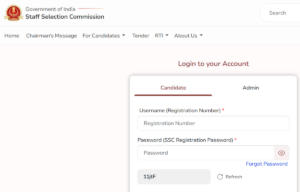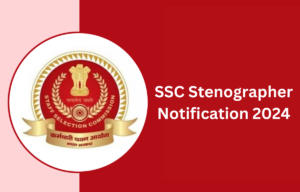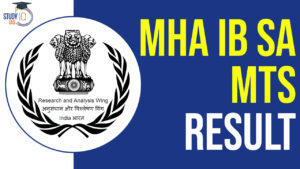Daily Current Affairs for UPSC 2022
Q) With reference to District Mineral Foundations (DMFs), consider the following statements:
- DMFs are non-profit trusts established by the Mines and Minerals Act of 2015.
- They are established by state governments in every district where mining takes place.
- The DMF governing council is presided over by the District Magistrate.
Which of the statements given above are correct?
- 1 and 2 only
- 2 and 3 only
- 1 and 3 only
- 1, 2 and 3
Daily Current Affairs for UPSC – 20 December 2022
Explanation:
- Statement 1 is correct: District Mineral Foundations (DMFs) are non-profit trusts that are formed under the Mines and Minerals (Development and Regulation) (MMDR) Amendment Act 2015. In case of all mining leases executed before 12th January, 2015 (the date of coming into force of the Amendment Act) miners will have to contribute an amount equal to 30% of the royalty payable by them to the DMFs. Where mining leases are granted after 12.01.2015, the rate of contribution would be 10% of the royalty payable.
- Statement 2 is incorrect: DMFs are established by state governments in every district affected by mining-related operations (not in every district where mining takes place). The idea behind setting up of DMFs is that local mining-affected communities, mostly tribal and among the poorest in the country, also have the right to benefit from natural resources extracted from where they live.
- Statement 3 is correct: The operation of DMFs falls under the jurisdiction of the relevant State Government. The fund for DMF is collected at the district level. Composition and Functions of the DMF is prescribed by the State Governments taking guidelines from the Article 244 of Indian Constitution, Fifth and sixth schedules, Provisions of the Panchayats (Extension to the Scheduled Areas) Act, 1996, The Scheduled Tribes and Other Traditional Forest Dwellers (Recognition of Forest Rights) Act, 2006. The DMF have a Governing Council chaired by the District magistrate and other members are Five community representatives from areas affected by mining, two state government representatives, nominated by the state government, one representative from mining companies contributing to the DMF, nominated by the district mining association
Q) Consider the following statements about the Black carbon:
- Emissions from diesel engines are the primary source of black carbon.
- It has a warming potential about 400 times that of carbon dioxide.
- It impacts cloud formation and regional atmospheric circulation patterns.
- It heats the ice surface by increasing its surface albedo.
Which of the statements given above are correct?
- 1, 2 and 3 only
- 2, 3 and 4 only
- 1 and 4 only
- 1, 2, 3 and 4
Explanation:
- Statement 1 is correct: Black carbon is a pure carbon sooty material, formed through the incomplete combustion of fossil fuels, biofuel, and biomass. Primary sources of black carbon include emissions from diesel engines, cook stoves, wood burning and forest fires.
- Statement 2 is correct: Black carbon is a short-lived climate pollutant with a lifetime of only days to weeks after release in the atmosphere. Black carbon has a warming impact on climate 460-1,500 times stronger than Carbon Dioxide per unit of mass. Using clean cooking fuel, electric mobility, reducing stubble burning, avoiding municipal waste burning etc can help in tackling black carbon.
- Statement 3 is correct: Black carbon, when suspended in the atmosphere, contributes to warming by converting incoming solar radiation to heat. It also influences cloud formation and impacts regional circulation and rainfall patterns.
- Statement 4 is incorrect: Black carbon can have significant direct and indirect impacts on the climate, the cryosphere (snow and ice), agriculture and human health. When deposited on ice and snow, black carbon and co-emitted particles reduce surface albedo (the ability to reflect sunlight) and heat the surface. The Arctic and glaciated regions such as the Himalayas are particularly vulnerable to melting as a result.
Q) Consider the following statements about the liquor prohibition in India:
- Among the north-eastern states, only Nagaland and Mizoram have completely prohibited liquor production.
- Alcohol is a state subject under the seventh schedule of the Indian Constitution.
- Article 47 of the Constitution emphasizes the prohibition of the consumption of intoxicating drinks and drugs that are injurious to health.
Which of the statements given above is/are correct?
- 1 and 2 only
- 2 and 3 only
- 3 only
- 1, 2 and 3
Explanation:
- Statement 1 is correct: Among all the north-eastern states Nagaland introduced total liquor prohibition on production in 1989 due to “moral and social” reasons, for the greater good of its citizens. In 2019, Mizoram became a “dry state” once again after the new government reintroduced complete prohibition that was repealed in 2015. Manipur has partial prohibition.
- Statement 2 is correct: Prohibition is the act or practice of forbidding something by law; more particularly the term refers to the banning of the manufacture, storage, transportation, sale, possession, and consumption of alcoholic beverages. Alcohol is a subject in the State list under the seventh schedule of the Indian Constitution. Thus, laws regarding alcohol differ from state to state.
- Statement 3 is correct: The Directive Principle of state policy under Article 47 in the Constitution of India states that the state shall undertake rules to bring about prohibition of the consumption except for medicinal purposes of intoxicating drinks and of drugs which are injurious to health.
Q) With reference to Ayurswasthya yojana, consider the following statements:
- Under it, financial assistance is provided to eligible families to decrease out-of-pocket expenditures on health services.
- As per the scheme, Ayush medical health units will be established in both the government and non-government sectors.
Which of the statements given above is/are correct?
- 1 only
- 2 only
- Both 1 and 2
- Neither 1 nor 2
Explanation:
- Statement 1 is incorrect: Ministry of AYUSH is running a Central Sector Scheme namely, Ayurswasthya Yojana from the Financial Year 2021-22. Under it, financial assistance is provided to eligible individual organizations/institutes for establishing and upgrading their functions & facilities and/or for research & development activities in AYUSH.
- Statement 2 is correct: Ayurswasthya Yojana aims to support establishment of advanced/ specialized AYUSH medical health unit in reputed AYUSH and Allopathic institutions both in Government and Non-Government sector. It also aims to support creative and innovative proposals for establishment and upgradation of both functions and facilities in education technology, research & innovation and such other fields necessary for promotion of AYUSH at national as well as international level. To support creative and innovative proposals for prestigious organizations which have well-established buildings and infrastructure, and wish to work for AYUSH systems to the level of Centre of Excellence. The maximum admissible financial assistance to an organization/institute is Rs.10.00 crores for maximum period of three years.
Q) Consider the following statements about maritime piracy:
- At present, there is no domestic legislation in India on maritime piracy.
- The Acts of piracy by a foreigner committed inside as well as outside the territorial waters of India constitute an offence under the Indian Penal Code.
- India recently ratified the United Nations Convention on the Law of the Sea (UNCLOS) to check piracy in the Indian Ocean.
Which of the statements given above is/are not correct?
- 1 only
- 2 only
- 1 and 3 only
- 2 and 3 only
Explanation:
- Statement 1 is correct: United Nations Convention on the Law of the Sea (UNCLOS) of 1982 defines piracy to include any acts of violence, detention or destruction committed for private ends against persons or property on board a ship on the high seas or outside the jurisdiction of any state. Currently, India does not have a domestic legislation on maritime piracy. In the past, provisions of the Indian Penal Code, 1860 (IPC) pertaining to armed robbery and the admiralty jurisdiction of certain courts have been invoked to prosecute pirates.
- Statement 2 is incorrect: Acts of piracy threaten maritime security by endangering the welfare of people travelling by sea and the security of navigation and commerce. The sovereignty of India extends only up to the territorial waters of India (12 nautical miles from the coastline). However, acts of piracy by a foreigner committed outside the territorial waters of India do not constitute an offence under the IPC. For example, in the Alondra Rainbow case (1999), the Mumbai High Court acquitted the accused on grounds that India did not have the jurisdiction to prosecute them.
- Statement 3 is incorrect: In 1995, India ratified the UNCLOS, which gives a uniform international legal framework for combating acts of piracy. Anti-Maritime Piracy Bill, 2019 was introduced in Lok Sabha on December 9, 2019, and recently has been referred to the Standing Committee on External Affairs for detailed examination.


 SSC CGL Apply Online 2024, Last Date is ...
SSC CGL Apply Online 2024, Last Date is ...
 SSC Stenographer 2024 Notification Out a...
SSC Stenographer 2024 Notification Out a...
 IB SA MTS Final Result 2024 Out at mha.g...
IB SA MTS Final Result 2024 Out at mha.g...

















